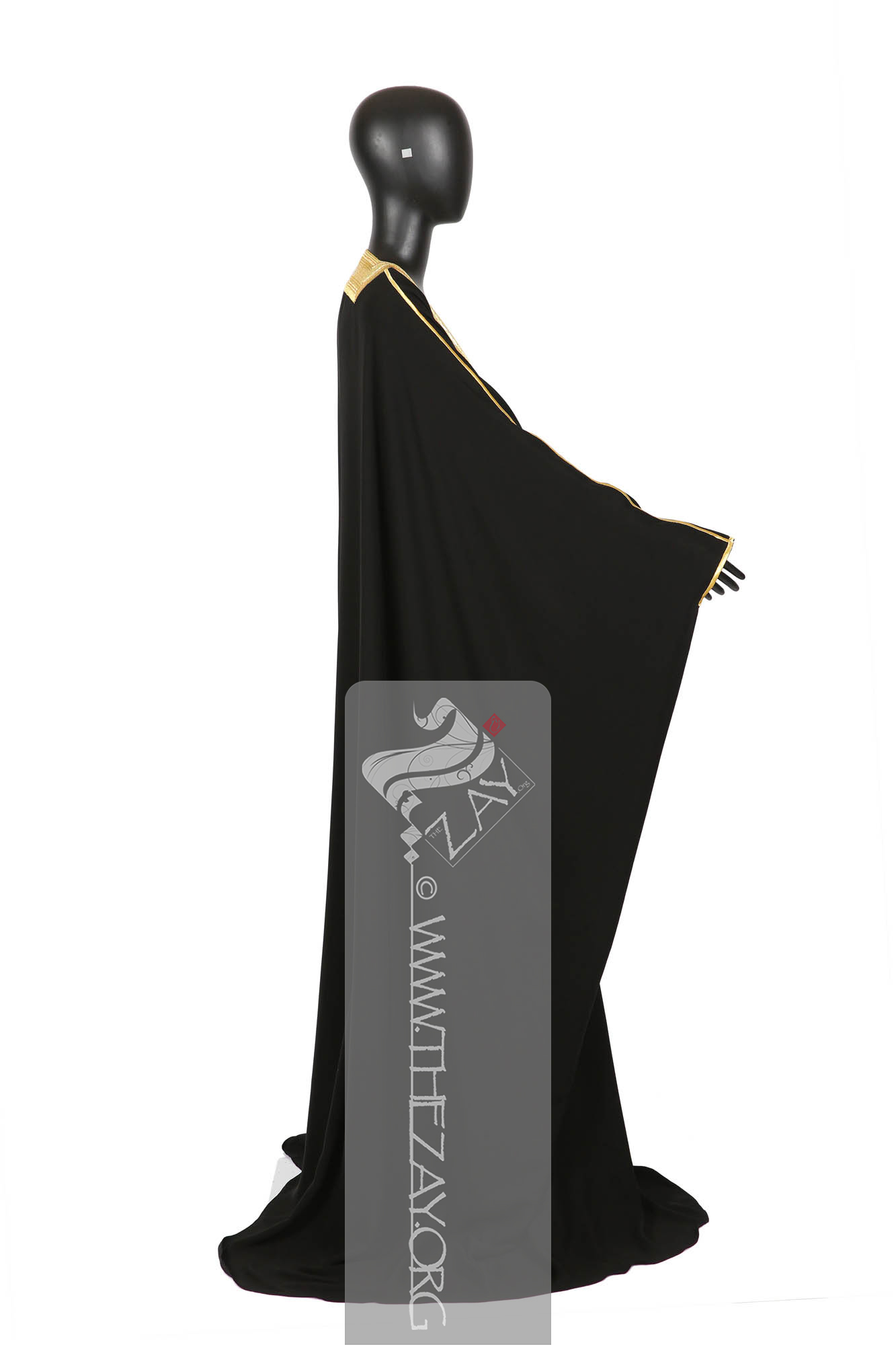Object notes
According to the label, this cloak (abayah) was made by ” Abayat Al Zarqi ” in Doha, Qatar.
Object History
Dr. Reem Tariq El Mutwalli commissioned this article from Al Zarqi store, Suq Al Jabir, Doha 2018.
Object Features
This cloak named (abayah), (bisht), (mishlah), (dafah), or (abayat_ras) is generally constructed from two rectangular pieces of fabric of equal length (fajatayn) sewn together horizontally.
The two outer edges of each length (fajah) are folded to the middle and sewn at the top to create the shoulder line. The lengthwise folded sides fajatayn thus leave an opening in the middle running the length of the front body section.
Two small holes are opened at the folded line, on the top corners of each shoulder line to allow the hands to pass through creating the sleeves without having to cut and add a sleeve as in most clothes.
The abayah or dafah – as it is called in Qatar – is usually embellished with gold or silver cords called (qitan) from the shoulder line down to the wrists, around the sleeve’s openings, and on the edges of the front longitudinal opening. Additionally, in this cloak, the neckline is densely embroidered by hand (khwar) in gilded threads (zari) reaching down to the waist in geometric patterns adding more value to the cloak. This hand embroidering is called (darbawiyah).
The embroidery is composed of a two-and-a-half-inch wide band of longitudinal embroidery lines in the upper half of the dafah and an inch in the lower half with different patterns sitting adjacent to one another. These lines have specific names, starting from the outer edge of the hemline inwards: (tarkib), (miksar) , (haylah), (buruj).
This cloak is distinguished by a large arabesque cartouche embroidered on each side at the waistline in geometric, arabesque, and floral patterns. The overall design creates an abstract stylised fish motif hence the name (um_smichah) (see ZI2018.500223 BAHRAIN).
Generally, this article is complemented by a pair of golden zari cords qitan known as (amayil), regularly interspaced with a number of gilded thread zari balls ending at times with tassels. Sometimes these are quite largely exaggerated and prominent, other times they are made of gold with precious stones substituting for the thread balls. In this example, we have just one zari ball on each side ending with three simple looped cords. These are mainly decorative and help fasten the cloak.
















